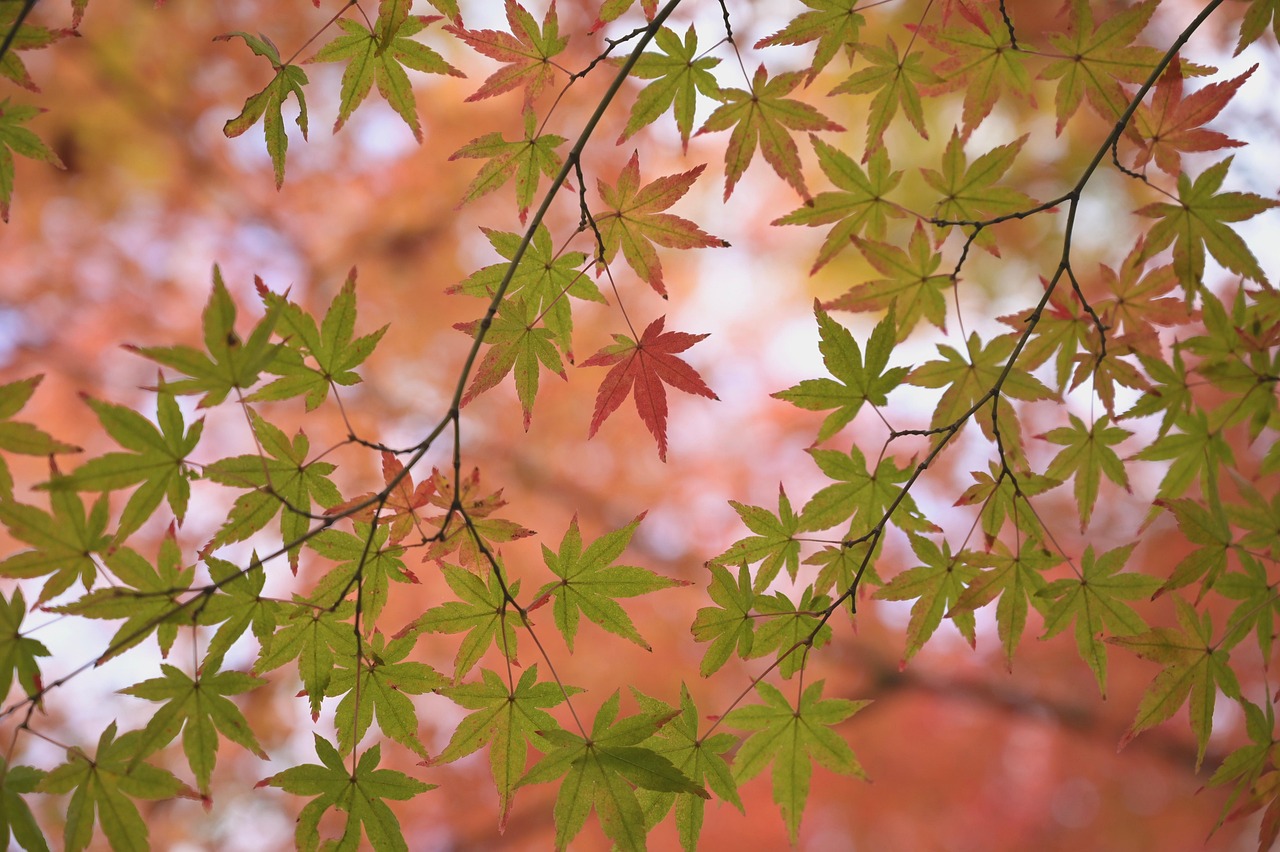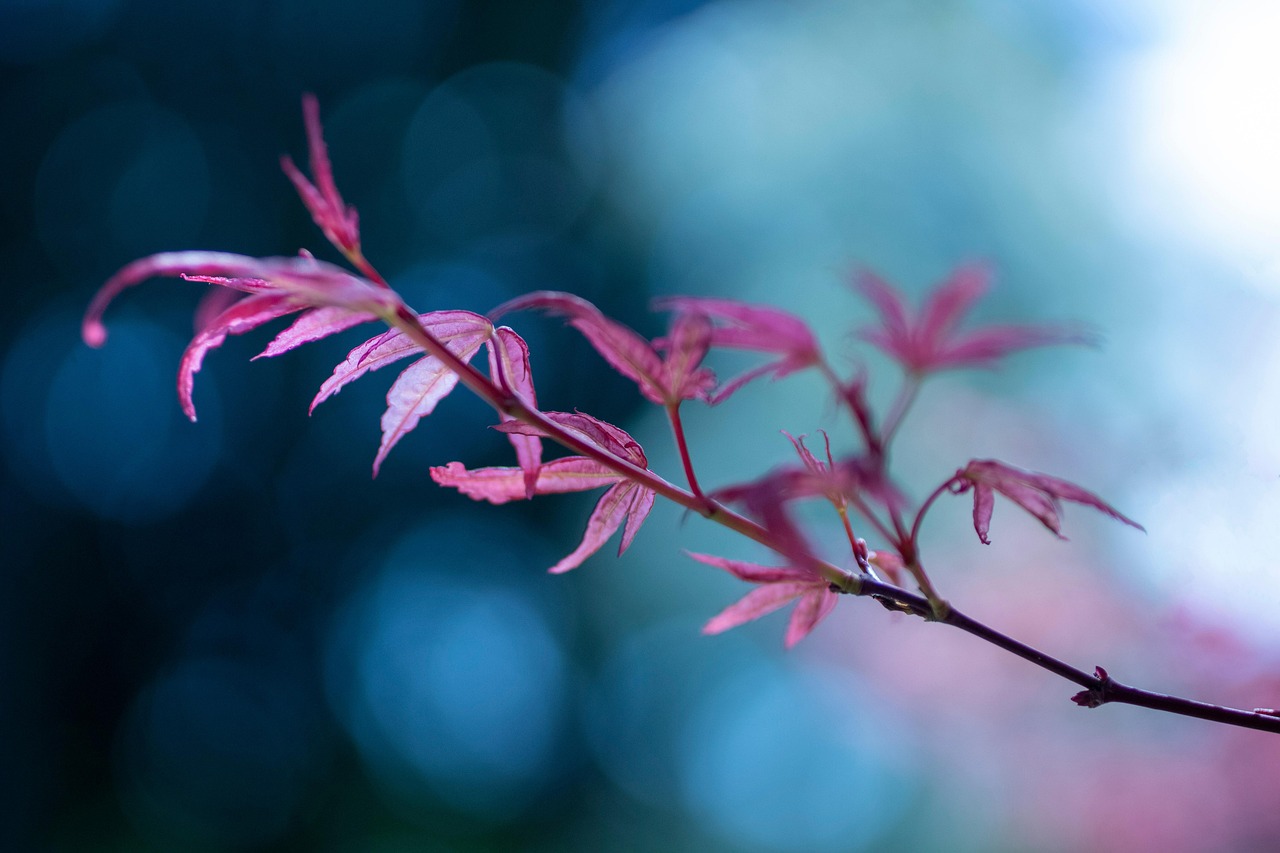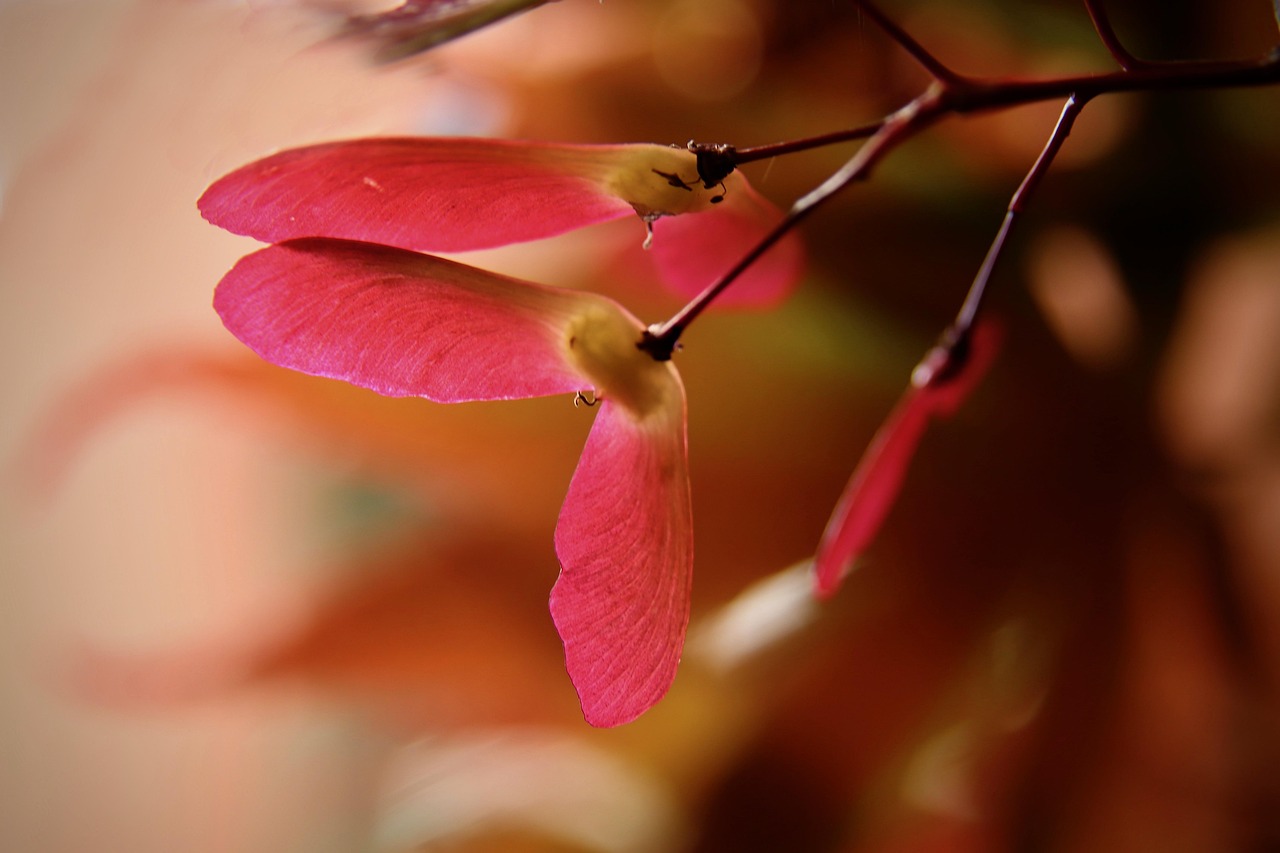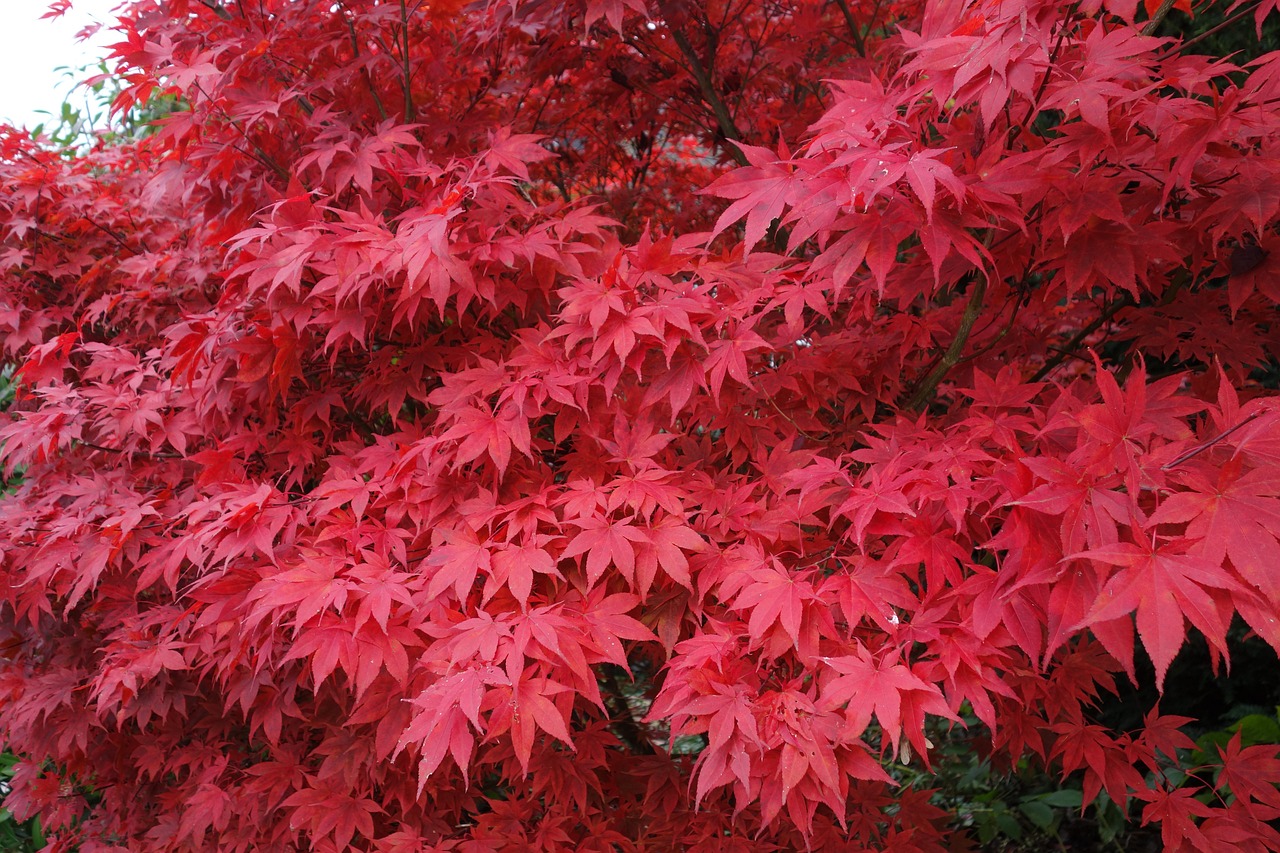Pruning Japanese maple trees is essential for enhancing their stunning red foliage. Proper pruning encourages vibrant color, promotes healthy growth, and maintains the tree’s graceful form. Understanding the right techniques and timing is crucial for achieving the best results.
Japanese maple trees, known for their delicate leaves and stunning fall colors, are a favorite among gardeners and landscapers. These trees can be a spectacular addition to any landscape, particularly when their leaves turn bright red in autumn. However, to achieve this vivid display of color, proper care and maintenance are essential. One of the most critical aspects of maintaining a healthy Japanese maple is through effective pruning.

Pruning not only helps in shaping the tree but also promotes airflow and sunlight penetration. This is vital for the health of the tree and the intensity of its foliage color. When done correctly, pruning can enhance the natural beauty of the Japanese maple while encouraging the growth of vibrant red leaves.
Understanding Japanese Maple Trees
Before diving into the specifics of pruning techniques, it is important to understand the characteristics of Japanese maple trees. They belong to the Acer genus and are native to Japan, Korea, and China. These trees are known for their unique leaf shapes, sizes, and colors. Here are some key points about Japanese maples:
| Characteristic | Description |
|---|---|
| Height | Typically ranges from 3 to 30 feet depending on the variety. |
| Leaf Color | Varies from green to red, purple, and orange in different seasons. |
| Sunlight Requirements | Prefers partial shade but can tolerate full sun with adequate moisture. |
| Soil Type | Thrives in well-draining, slightly acidic soil. |
Japanese maples can be categorized into several varieties, each with its own unique characteristics. Some popular varieties include ‘Bloodgood’, ‘Tamukeyama’, and ‘Sango Kaku’. Understanding the specific needs of your tree type is essential for effective pruning.

The Importance of Pruning
Pruning Japanese maples serves multiple purposes that directly affect their health and appearance. Here are some important reasons why pruning is crucial:
- Encourages Growth: Pruning helps remove dead or diseased branches, allowing new growth to flourish.
- Enhances Airflow: A well-pruned tree has better airflow, which reduces the risk of fungal diseases.
- Improves Structure: Pruning shapes the tree, ensuring it maintains an attractive and balanced form.
- Promotes Color: By thinning out crowded branches, more sunlight reaches the leaves, enhancing their color intensity.
The timing of pruning is also essential. It is generally recommended to prune Japanese maples in late winter or early spring before new growth begins. This timing helps minimize stress on the tree and ensures that it can recover quickly from any cuts made during the pruning process.
Pruning Techniques
There are various techniques used when pruning Japanese maples. Each method serves a specific purpose and should be applied according to the desired outcome:

- Thinning: This involves selectively removing branches to improve light penetration and airflow.
- Heading Back: Cutting back branches to a specific bud encourages bushier growth.
- Crown Reduction: Reducing the overall height of the tree while maintaining its natural shape.
- Cleaning: Removing dead or damaged branches to promote overall health.
When performing these techniques, it is important to use clean, sharp tools. This minimizes damage to the tree and helps prevent the spread of disease. Always make cuts at a slight angle just above a bud, which encourages new growth in the desired direction.
Understanding these foundational concepts prepares you for more advanced pruning strategies that can lead to a breathtaking display of red foliage on your Japanese maple trees. Embracing proper techniques ensures that your trees not only survive but thrive in your garden landscape.
Timing Your Pruning
Timing is a critical factor in the successful pruning of Japanese maple trees. Pruning at the right moment can significantly influence the tree’s health and its ability to produce vibrant foliage. The best time to prune these trees is during late winter or early spring, just before the new growth starts. This timing is essential for several reasons.

- Minimized Stress: Pruning before the growing season helps reduce stress on the tree, allowing it to heal quickly.
- Encourages New Growth: Cutting back branches stimulates new growth, which is crucial for achieving lush foliage.
- Visibility of Structure: In winter, the lack of leaves makes it easier to see the tree’s structure and identify which branches to prune.
It is also essential to avoid pruning during the fall. Pruning in late fall can expose the tree to colder temperatures and potential frost damage. Additionally, any cuts made in late fall may not have enough time to heal before winter sets in, increasing the risk of disease.
Common Mistakes in Pruning Japanese Maples
Even experienced gardeners can make mistakes when pruning Japanese maples. Understanding these common pitfalls can help ensure that your pruning efforts are successful:
- Over-Pruning: Removing too many branches can shock the tree. It is best to prune selectively rather than drastically.
- Pruning at the Wrong Time: As mentioned earlier, pruning at the wrong time can harm the tree. Always stick to late winter or early spring.
- Neglecting Tool Maintenance: Using dull or dirty tools can damage branches and introduce diseases. Always use clean, sharp tools.
- Ignoring Tree Shape: Pruning without considering the natural shape of the tree can lead to an unbalanced appearance.
By being aware of these common mistakes, you can enhance your pruning technique and promote a healthier, more attractive tree.
Tools Needed for Pruning
Having the right tools is essential for successful pruning. Here are some must-have tools for trimming Japanese maple trees:
- Hand Pruners: Ideal for small branches and precise cuts. Look for a sharp pair with a comfortable grip.
- Loppers: Suitable for thicker branches, loppers provide extra leverage and reach.
- Saws: For larger branches, a pruning saw or a small hand saw will be necessary. Ensure it is sharp for clean cuts.
- Gloves: Protect your hands while working with potentially sharp branches and tools.
- Disinfectant: An essential tool for cleaning your equipment before and after pruning to prevent disease spread.
Investing in high-quality tools will not only make pruning easier but will also contribute to healthier results for your Japanese maple trees.
Post-Pruning Care
After pruning, providing proper care is essential for recovery and growth. Here are some steps to follow:
- Watering: Ensure your tree receives adequate water after pruning. This helps in recovery and promotes new growth.
- Mulching: Apply a layer of mulch around the base of the tree. This helps retain moisture and regulate soil temperature.
- Monitoring: Keep an eye on your tree for signs of stress, disease, or pests following pruning. Early detection is key.
- Nutrient Supply: Consider applying a balanced fertilizer in early spring to support new growth.
Caring for your Japanese maple after pruning enhances its resilience and helps it thrive throughout the growing season. With proper attention, your tree will reward you with stunning red foliage in due time.
The Art of Shaping Your Japanese Maple
Shaping your Japanese maple through careful pruning can enhance its aesthetic appeal in your landscape. There are various styles to consider when shaping your tree:
- Natural Form: This method emphasizes the tree’s natural growth pattern, allowing it to maintain its organic shape.
- Bonsai Style: For those interested in bonsai practices, shaping involves meticulous trimming to create a miniature version of the tree.
- Skeletal Structure: This technique focuses on showcasing the intricate branching structure by selectively removing foliage.
The choice of shaping style depends on personal preference and how you want your Japanese maple to complement your garden design. Each method can create a unique focal point that enhances the overall beauty of your outdoor space.
A well-pruned Japanese maple not only beautifies your landscape but also thrives healthily, providing stunning displays of color throughout the seasons. By understanding the nuances of timing, tools, and techniques, you can master the art of pruning and enjoy the majestic beauty of these trees for years to come.
Pest and Disease Management for Japanese Maples
Maintaining the health of your Japanese maple tree is crucial for achieving stunning red foliage. Pests and diseases can significantly hinder growth and affect the tree’s overall appearance. Understanding common threats and how to manage them is essential for any gardener.
Common Pests
Japanese maples can be susceptible to various pests. Here are some of the most common ones:
- Aphids: These small, sap-sucking insects can cause leaves to curl and distort. They can also produce a sticky substance known as honeydew, which may attract other pests.
- Spider Mites: These tiny arachnids thrive in dry conditions. Infestations can lead to yellowing leaves and fine webbing on branches.
- Scale Insects: These pests attach themselves to stems and leaves, sucking the tree’s sap. They can cause significant stress and decline if not managed properly.
- Leafhoppers: Known for their jumping ability, these insects feed on the sap of leaves, leading to leaf discoloration and stress.
Regular monitoring is key to preventing pest infestations. If you notice any signs of pests, consider using insecticidal soap or neem oil as organic treatment options. Always follow the manufacturer’s instructions for application.
Common Diseases
In addition to pests, Japanese maples are prone to several diseases that can affect their health:
- Verticillium Wilt: This soil-borne fungus causes leaves to wilt and turn brown. It can lead to branch dieback and ultimately tree decline.
- Powdery Mildew: Characterized by a white powdery substance on leaves, this fungal disease thrives in humid conditions. It can inhibit photosynthesis and weaken the tree.
- Canker Diseases: Various fungi can cause cankers, which are dead, sunken areas on the bark. Cankers can girdle branches, leading to dieback.
Preventing diseases involves proper cultural practices, such as ensuring adequate airflow around the tree and avoiding overhead watering. If a disease is detected, remove affected branches immediately to prevent further spread.
Enhancing Foliage Color
To achieve that stunning red foliage characteristic of Japanese maples, several factors come into play beyond pruning. These include sunlight exposure, soil conditions, and fertilization.
Sunlight Exposure
Japanese maples generally prefer partial shade to full sun conditions. However, the intensity of sunlight directly affects leaf color:
- Full Sun: While full sun can enhance red hues, too much direct sunlight may scorch the leaves, particularly in hotter climates.
- Partial Shade: Many varieties thrive best in dappled sunlight. This balance promotes vibrant color while preventing leaf burn.
Positioning your Japanese maple in an area that receives morning sun and afternoon shade can help maintain both color and leaf health.
Soil Conditions
The right soil type is critical for healthy growth and vibrant foliage. Japanese maples thrive in well-draining soils that retain some moisture without becoming waterlogged:
- Slightly Acidic pH: Aim for soil pH levels between 5.5 and 6.5 for optimal growth.
- Organic Matter: Incorporating compost or well-rotted manure improves soil structure and provides essential nutrients.
A soil test can provide valuable insights into the nutrient levels and pH of your garden soil, allowing for appropriate amendments.
Fertilization Practices
Proper fertilization can significantly impact the health and color of your Japanese maple. Here are some guidelines:
- Timing: Fertilize in early spring before the growing season begins. Avoid fertilizing late in the year as this can promote new growth that may not harden off before winter.
- Type of Fertilizer: Use a balanced fertilizer with equal parts nitrogen, phosphorus, and potassium (e.g., 10-10-10) or one specifically formulated for trees.
- Application Rate: Follow package instructions regarding application rates based on the size and age of your tree.
A well-nourished tree is better equipped to produce vibrant red foliage while also resisting pests and diseases.
Seasonal Care Tips
Caring for your Japanese maple extends beyond pruning and fertilization. Seasonal care tips can help ensure its health throughout the year:
Spring Care
In spring, monitor for pests and diseases as new growth appears. This is also the time for your first round of fertilization.
Summer Care
Drought stress can occur during hot summer months. Ensure consistent watering, particularly during dry spells, while avoiding waterlogging.
Fall Care
As leaves change color and begin to fall, it is essential to rake up debris to prevent pest habitats and disease spread. This is also a good time to assess the tree’s structure for any necessary pruning after leaf drop.
winter Care
During winter months, protect young trees from severe cold with mulch around the base. Minimize winter injury by ensuring your tree remains hydrated before freezing temperatures set in.
By understanding seasonal care practices, you enhance your Japanese maple’s resilience and beauty throughout the year, positioning it perfectly for a stunning display of red foliage each autumn.
Maintaining the health and beauty of your Japanese maple involves more than just pruning. Environmental factors, proper care, and attention to detail all play significant roles in ensuring these trees thrive. To achieve the stunning red foliage that makes Japanese maples so desirable, gardeners should focus on a holistic approach to care.
Environmental Factors
Japanese maples thrive in environments that mimic their native habitats. Understanding the environmental needs can help you create the perfect conditions for your tree:
- Climate: Japanese maples prefer temperate climates. They can tolerate cold temperatures but should be protected from harsh winds and extreme cold.
- Humidity: Moderate humidity is beneficial. In dry climates, consider misting the leaves during hot months to prevent stress.
- Location: Choose a planting site that offers some protection from intense afternoon sun and wind exposure, especially for younger trees.
Assessing your garden’s microclimate can help you select the best variety of Japanese maple for your specific conditions. Some varieties are better suited for warmer regions, while others may thrive in cooler climates.
Choosing the Right Variety
Japanese maples come in various shapes, sizes, and colors. Selecting the right variety can significantly affect your garden’s aesthetic and the ease of care:
- Acer palmatum ‘Bloodgood’: Known for its deep red foliage, this variety is hardy and offers excellent color retention.
- Acer palmatum ‘Tamukeyama’: A weeping variety with stunning purple-red leaves that change to brilliant red in autumn.
- Acer palmatum ‘Sango Kaku’: Features beautiful coral bark and green leaves that turn yellow and then red in fall.
Researching the specific needs of each variety will help you select one that fits your landscape goals and climate conditions. Each type brings unique beauty to your garden while requiring different levels of care.
Long-Term Care Strategies
Long-term care strategies are essential for ensuring your Japanese maple continues to flourish over the years:
- Regular Monitoring: Keep an eye on growth patterns, leaf color, and overall health. Early detection of issues can lead to prompt solutions.
- Consistent Pruning Schedule: Establish a routine for annual pruning. Consistency helps maintain shape and encourages healthy growth.
- Soil Health Maintenance: Periodically test soil pH and nutrient levels. Adjust as needed to keep the soil conducive to healthy growth.
- Pest and Disease Vigilance: Regularly inspect leaves and branches for signs of pests or diseases. Quick action can prevent larger problems.
Implementing these long-term strategies will not only enhance the beauty of your Japanese maple but also increase its lifespan and resilience against environmental stressors.
Final Thoughts
Caring for a Japanese maple tree is a rewarding endeavor that requires attention to detail and understanding of best practices. From selecting the right variety to implementing effective pruning techniques, every step plays a role in achieving that breathtaking display of red foliage that these trees are renowned for.
Remember that each tree is unique and may require tailored care based on its specific needs and your local environment. By staying informed about seasonal care practices, pest management, and long-term strategies, you will cultivate a beautiful Japanese maple that enhances your garden’s landscape year after year.
Ultimately, the goal is to create a thriving environment where your Japanese maple can flourish. With patience and dedication, you will enjoy a stunning display of vibrant colors, enriching your outdoor space with beauty and tranquility.
